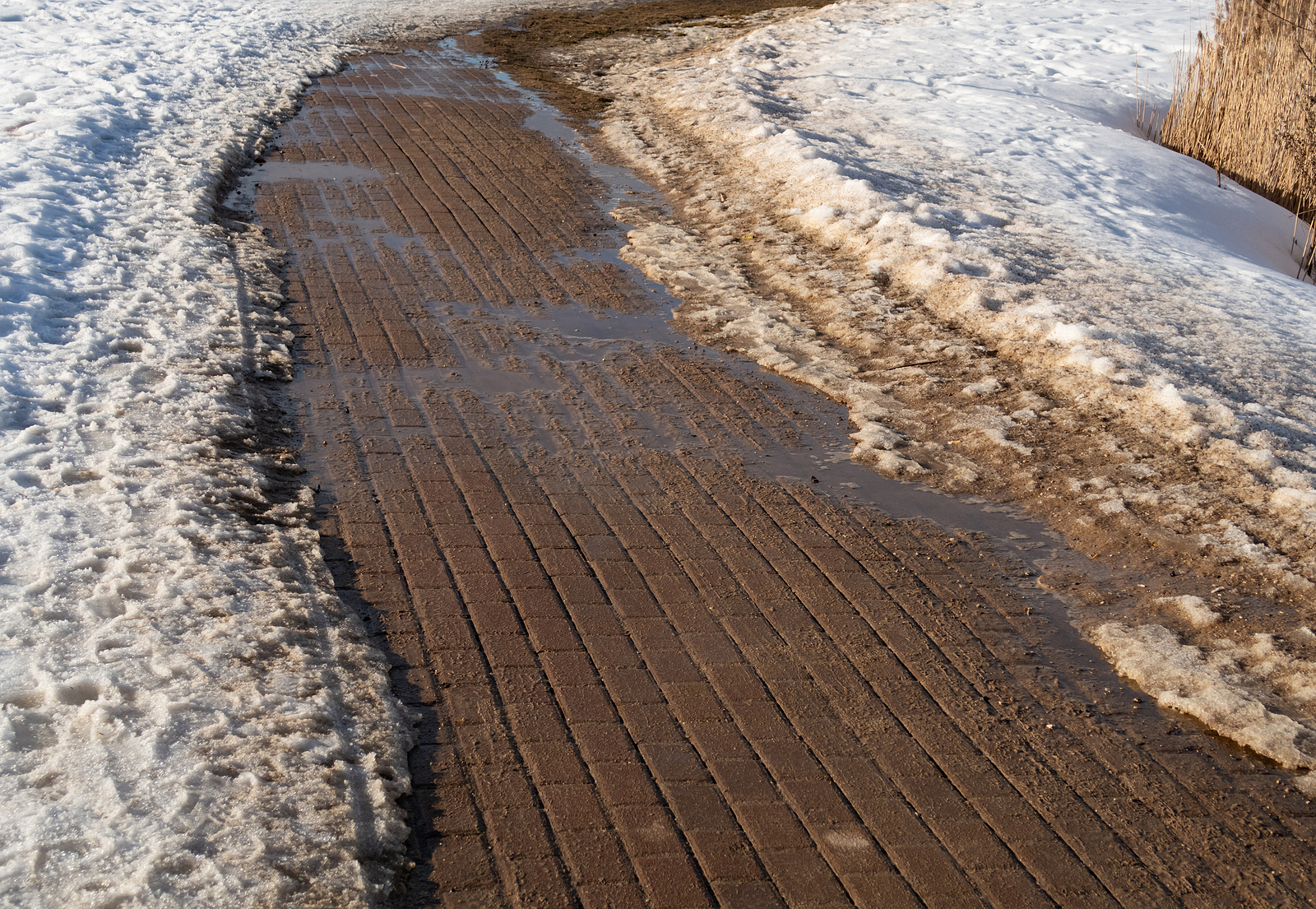Cities are responsible for maintaining most of the public property in the community, including the city streets. However, there are some questions regarding who is responsible for other parts of the public right of way (ROW), such as sidewalks and alleys. City officials should have a good understanding of who is responsible for maintaining the right of way so they can effectively plan for future improvements.
As detailed in Code of Iowa Section 364.12, cities are responsible for keeping all public grounds “in repair, and free of nuisance.” This includes streets, sidewalks, alleys, bridges and a number of other public properties. However, the law does provide some exceptions and places specific responsibilities on abutting property owners.
Sidewalk Maintenance Requirements and Responsibilities
The Code allows cities to enact ordinances that require abutting property owners to maintain and repair sidewalks (this is often detailed in a city’s nuisance ordinance). Approving a sidewalk program that addresses issues such as maintenance, repair, replacement and installation can provide a sound long-term plan for citizens, council members and city employees. These plans should address the requirements for maintaining sidewalks, how and when the city will inspect sidewalks, and how the program will be funded. Such programs can be funded by the city, by property owners directly or through special assessments on the property owner’s taxes. Cities often use a combination of these sources to fund sidewalk programs.
Cities also have the authority to approve ordinances that require the installation of sidewalks following proper notice. This is typically done to address areas of the city that do not have a sidewalk or where new construction occurs.
Removal of Snow and Ice from Sidewalks
Code of Iowa Section 364.12(2)(b) places the onus of removing natural accumulations of snow and ice from sidewalks on the abutting property owners. The law states that this must be done within a reasonable time and that property owners may be liable for damages caused by the failure to, “use reasonable care in the removal of the snow or ice.” Most city ordinances contain these provisions and provide definition on what is considered reasonable (such as clearing sidewalks within 48 or 72 hours).
Many city ordinances also address the issue of a property owner failing to remove snow and ice in the prescribed timeframe. In these situations, the city may perform the necessary work and assess the cost to the property owner in the same manner as a property tax.
The Code states that the city’s general duty does not include the removal of natural accumulations of snow and ice from sidewalks. However, when the city is the abutting property owner, it must remove the snow and ice accumulations as any other abutting property owner.
Maintaining Other Parts of the ROW
According to Code Section 364.12(2)(c), cities are permitted to require property owners to maintain the ROW. The law specifically says this can include the area between the street and sidewalk. City councils should approve an ordinance that details this requirement and give the city the authority to enforce its provisions. Typically, such an ordinance requires the property owner to keep the sidewalk and ROW safe and in a hazard-free condition, which includes mowing the area between the street and sidewalk. In addition, cities can require property owners to maintain trees that are in the ROW, including trimming trees when necessary and clearing any debris.
However, property owners cannot be required to remove diseased trees or dead wood from publicly owned property or the ROW. Most cities find that existing trees located in the city ROW are an annual financial burden. For this reason, many cities have decided to adopt a tree ordinance that specifically prohibits planting trees in the ROW, thus limiting future liabilities.
Alley Maintenance Requirements and Responsibilities
Alleys are specifically listed in the Code as property the city must maintain, repair and keep free from nuisances. Cities must determine the level of maintenance required that the property owners and citizens of the community expect. It is also wise to keep liability issues in mind to ensure the city’s streets and alleys are safe for regular use.
With this in mind, it important to consult with the city attorney to determine the city’s plan and what should be included in any policy that addresses maintenance of public property while weighing the social, economic and political realities.
Vacating an Alley
A city may vacate an alley, or part of an alley, if the city council determines it to be of no benefit to the public pursuant to Code of Iowa Section 354.23. The alley is vacated by resolution following a public hearing or by ordinance. The resolution or ordinance must be recorded with the county.
The city may convey the vacated property by deed or may convey the property to abutting property owners through the vacation instrument. If the vacating instrument is used to convey property, then it must include a list of abutting property owners to whom the property is being conveyed, along with the corresponding description of each parcel being conveyed. According to the Code, a recorded vacation instrument which conforms to this section is equivalent to a deed of conveyance, and the instrument shall be filed and indexed as a conveyance by the county recorder and auditor. The city should seek the assistance of the city attorney to ensure that the transaction is completed properly.
In many cases the city conveys the property to the abutting property owner at no cost, other than a fee to recover the costs of having a property survey prepared, the city attorney preparing the appropriate paper work, and the recording fees.
Funding ROW Maintenance
Cities have several options for funding ROW maintenance and repair projects. Obviously, cities can use the general fund to pay for such costs. They can also use Road Use Tax funds if the work to be done is part of the platted street system. Local Option Sales Tax funds can be used if the revenue purpose statement allows for such use. The city can sell bonds or agree to a loan to raise money. Finally, the city can assess abutting property owners to help pay for the improvements.






